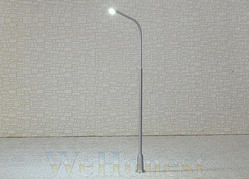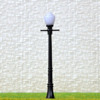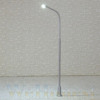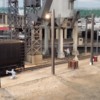I have some questions about how to wire and install resistors and diodes on led street lights and Lampposts.
I searched the forum for some information about this but came back with information overload and couldn’t find specific information for what I was trying to do.
I don’t have a lot of experience with electronics so please bear with me.
I wanted to wire up led street lamps and lamposts that I purchased through eBay from a supplier (We Honest) located in China. I had previously purchased and installed some signals that are attached to relays from this supplier. Gunrunner John was a big help for me in getting these to work. And they work great!
The supplier provided the street lamps with the resistors, but I’m not sure how to wire the lights up together.
Information on the lights below:
The operating specifications are listed as the same for both the lampposts and the street lights.
- Made with 3V clear white SMD LEDs
- These Lampposts are suitable for use at supply voltages of 3V DC only.
- DO NOT use them on 12V or 16V directely to avoid damaging the LED, you must connect a resistor in series before you use them on 12V or 16V,
- Operating Voltage for each LED lamppost = 3V ( DC only )
- Operating Current for each LED lamppost = 20mA
I was going to power the LEDs with a 14V fixed AC transformer with the output routed through the below LM317 module. Then adjust the DC voltage down to a suitable operating range with it.
Specifications LM317:
Input: DC 0V ~ 30V / AC 0V ~ 22V
Output: DC 1.25V ~ 28V
Output current: 2A Max.
The minimum differential between input and output: 3V, input must be higher than the output voltage above 3V to be regulated. Buck, not boost, when input 5V output 1.25V ~ 2V, not 6V.
Circuit board size: 69 x 50 x 27mm ( L x W x H )
Note: Due to the digital voltage display module operating voltage is 3V, only when the voltage is higher than 3V to display properly
The Lamposts have a white and black wire or Red and White wire here is a pic;
Here are the supplied resistors.
How should I wire these?
Do the white wires of each light get wired together?
Do I solder the resistor onto the red or black wire of each lamppost and street light?
Which band of the resistor faces towards the light Brown or Gold?
Do I place a 1N4001 diode in-line with the resistor? (Band toward the resistor)
How many of these lampposts and street lights can be wired together using the LM317 module?
Any and all help would be greatly appreciated.











